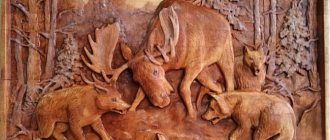13. Aivazovsky Ivan Konstantinovich (1817-1900)
- marine painter, at the age of 25 received European fame, at the age of 27 - painter of the Main Naval Staff of Russia, at the age of 29 - professor at the Academy of Arts
"The Ninth Wave" (1850) - brought fame to the artist
"St. George's Monastery. Cape Fiolent"
“Battle of Navarino” (1827) - famous historical painting
"Shipwreck" (1876)
"Kronstadt Raid" (1840)
“Battle of Chesme” (1848) - famous historical painting
"Review of the Black Sea Fleet in 1849"
Ajvazovskij It's Georgij monastery-Aivazovsky St. George Monastery. Cape Fiolent.
1873-Ajvazovskij-It's the rainbow-Aivazovsky-Rainbow
1827-Avazovski-There is the sea battle at Navarin-Aivazovsky-Battle of Navarino
1850-Ajvazovskij It's the 9th wave-Aivazovsky -The Ninth Wave.
1876-Ajvazovskij-It's a shipwreck-Aivazovsky-Shipwreck
1848-Ajvazovskij-There is the Battle at Chesmen-Aivazovsky -Chesmensky battle
1881-KRAMSKOJ-Ajvazovskij-Kramskoy-PORTRAIT OF AIVAZOVSKY
1886-Ajvazovskij-It's a storm-Aivazovsky-Storm.
Ajvazovskij-It's Leandr tower in Konstantinopl-Aivazovsky View of the Leandr tower in Constantinople
1840-Ajvazovskij-It's the Kronshtadt roads-Aivazovsky Kronstadt raid
1849-Ajvazovskij-It's an inspection Chernomorskij Flot-Aivaeovsky Inspection of the Black Sea Fleet in 1849
Landscape styles
Landscape painting is also divided into categories according to the style of painting. Each direction is characterized by unique elements that are achieved using special paint application techniques, play of colors, the use of additional materials, and projection distortion.
Realism
Many landscape painters work in a realistic style. The beauty of nature is so perfect that it is enough to masterfully capture it on canvas down to the last leaf. However, even the advent of photography did not reduce the popularity of realism in fine art. Only real masters can transfer the surrounding world so beautifully onto canvas that nature will look more delightful in the picture than in reality.
Ivan Shishkin is considered a true master who worked in the style of realism. He painted every blade of grass with such meticulous precision that he was nicknamed a photographer. But thanks to the immortal creations of the master, you can admire the pristine beauty of the nature of the past, as in the painting “Rye”.
Impressionism
This is the most recognizable style of landscape painting.
A new movement in fine art appeared in the second half of the 19th century in France, when artists decided to paint pictures of nature in the open air without studio modification.
Van Gogh, who became interested in the new writing technique, made a great contribution to the popularization of impressionism. At the same time, the author came up with his own method of applying paint to the canvas with thick strokes, which is used by many masters of painting even now. One of Van Gogh’s most famous paintings, “View of Arles with Irises,” was painted in the now classic technique of impressionism.
Abstractionism
This is a relatively new artistic movement that appeared at the beginning of the 20th century. Abstractionism is the complete opposite of realism; it distorts objects beyond recognition. The artist makes a challenge to society with his work. Not everyone is able to understand conceptual art, and abstraction in painting has not found a response in society for a long time.
Wassily Kandinsky is considered the founder of abstract art, who was inspired to create a new direction by the works of Claude Monet. For a long time the author did not find his admirers. Now, paintings by Wassily Kandinsky are sold at auctions for fabulous sums. Thus, the abstraction “Marnau. Landscape with a Green House" was sold for more than $40 million.
The new direction in fine art also attracted Kazemir Malevich, who at that time worked in the style of impressionism. The artist took the principle of abstractionism as a basis, combined it with cubism and created his own movement - Suprematism. This can be seen in “The Morning After the Storm.”
Surrealism
The creative flow is characterized by more than a certain technique of applying paints, the use of projections, and playing with light. In surrealism, the inner spiritual world of the author is especially clearly manifested, bringing to the surface the deepest thoughts of the mind. A prominent representative of the surrealist movement is Salvador Dali. “The Persistence of Memory” can be considered endlessly and each time you find a new meaning.
Landscapes made in the style of surrealism reflect supernatural, elusive images of dreams, myths, and fantasies. The works often lack recognizable geological elements such as mountains, rivers, and depressions.
The images contradict traditional ideas about the landscape genre and suggest that the inner world outside our bodies is more important and subject to study. This is especially noticeable in the painting of the famous surrealist Mark Ernst “The Metamorphosis of Fire”.
Written references to the bathhouse
According to chronicles of the 10th–13th centuries, the steam bath was widespread among the Eastern Slavs already in the 5th–6th centuries, which indicates their high culture. The ancient Slavs called the bathhouse “mov”, “movnya”, “movnitsa”, “mylnya”, “vlaznya” or simply “banya”. Confirmation of the widespread use of the bathhouse among the ancient Slavs is the chronicle message that one of the forms of tribute that one Slavic tribe paid to another was birch brooms.
The Arab scientist Ibn Dasta, traveling around Rus' in the 10th century, noted in his notes that Russians really like to take a steam bath, and then roll in the snow or swim in an ice hole. Ibn Dasta also reports that in villages, baths are dugouts that are also used as dwellings.
In the monument of Russian culture, in the chronicle work of Nestor “The Tale of Bygone Years” (945), in the part describing the legendary journey of the Apostle Andrew from Sinop to Rome through Kiev and Novgorod, there is a vivid image of the bath procedure in Veliky Novgorod: “... the sight of the bath ancient; and they will burn it with the lords, they will get together, and they will be Nazi and douse themselves with kvass, and they will take the young rod on everyone, they will fight themselves and they will finish it off when they come out alive, and they will douse themselves with cold water, and then they will come to life; and they do this all day long and torment them not in this way, but to torment themselves, and then they do it not for themselves, but torment.”
| Nestor the Chronicler |
The bathhouse is mentioned in the treaty between Rus' and Byzantium (907), in which the Russians secure the right to use the bathhouse upon arrival in Constantinople: “...and let them do whatever they want.”
The “Tale of Bygone Years” describes the use of a bathhouse for the purpose of performing a cleansing ritual: “Olga commanded the villagers who came to perform a roaring ceremony: come to me, washed out. And the villagers climbed in and began to wash.”
Prince Vladimir the Great
In the charter of Grand Duke Vladimir (966), baths were called institutions for the infirm, which reflects a deep understanding of the bath as an effective therapeutic tool. The Nikon list tells that in 1019, Bishop Ephraim of Pereyaslavl, who later became the Metropolitan of Kiev, ordered the construction of “...baths and bath buildings and doctors and hospitals for all who come and free healing.” The doctor-monk of the Kiev-Pechersk Monastery Agapit healed the sick with herbs and a steam bath. It is interesting to note that according to the monastery regulations, patients being treated in the monastery hospital were supposed to be washed in a bathhouse twice a month.
The granddaughter of the Kyiv prince Vladimir Monomakh, Eupraxia (Zoya), the first Russian female doctor, spoke highly of the therapeutic effect of the steam bath: “... invigorates the body and cheers the soul.”
The Old Russian “Tale of Peter and Fevronia of Murom,” which belongs to the folklore of ancient Rus' at the beginning of the 13th century, well illustrates the leading role of the bathhouse in Old Russian folk empirical medicine and the nature of the original and often very effective medicinal remedies used in it. According to some copies of this story, the Murom prince Peter, who suffered from an incurable skin disease, was healed in the Ryazan land by the girl healer Fevronia, whose father and brother were beekeepers, i.e. They were engaged in extracting honey from wild bees in the forests. Having examined the prince’s “scabs and ulcers,” the healer ordered the bathhouse to be heated hot, the patient to be washed, and those parts of his body that “are supposed to be scabs and ulcers” to be anointed with honey from wild bees. As a result of this treatment, the sick prince recovered - his body became “healthy and smooth.”
|
|
Features of Russian doubles
Subsequently, the steam room came into use and became a national symbol, uniting people of different personalities, professions and religions in this activity. Artist V.A. Plotnikov the painting “In the Bath” from 1898 captured this moment. Many other famous artists and performers were not averse to taking a steam bath and rejuvenating both soul and body. In modern society, Russian steam rooms are common in rural areas, but in cities, a movement for a healthy life is slowly developing, and with it Russian steam rooms.
How not to mention the art of massage with brooms? It’s art because one must also be able to masterfully wield this bath item. Brooms, as before, are used from birch, fir, oak, and linden. The choice largely depends on the health benefits you want to achieve. We know the healing natural effect of steam. Together with a wonderful broom and an experienced bath attendant, time will fly by unnoticed and useful. The canvas by Alexey and Sergei Tkachev “Family Bath” from 1982-83 conveys all the beauty and life of the family. All the attributes for a pleasant time in the bathhouse are visible.
Russian bath options
As the ancestors said, the soul and body are cleansed. Of course, our mother nature also helps in many ways; what would we do without medicinal plants and herbs. It turned out well to depict a truly Russian maiden after a steam room by the artist V.A. Plotnikov. in the painting “In the Bath” from 1898.
According to research, the steam room removes from the body:
- slags;
- excess water;
- toxins;
- takes away fatigue and stress.
As Arkady Plastov showed in the painting “Spring” of 1954, the most important feature that the Russian steam room has is, of course, the design itself. From time immemorial, the steam room was built from a wooden frame, which gives a colossal effect during the bathing process. Many foreign travelers have written about our Russian bathhouse.
Traditional Russian steam room is divided into three types:
- in black
- in white;
- inside the oven.
Preparation
It is best to choose a day a week for a bath when you will do bath procedures regularly. The choice of day depends on the nature of the work and the availability of the bathhouse itself. It’s one thing when you have your own bathhouse and you are pensioners, but another thing is on working days and a shared bathhouse. But it is advisable to visit the bathhouse constantly, since the body develops a conditioned reflex to shed old skin and sweat. In addition, avid steamers know that missing even one week affects the quality of the steam room on your next visit to the bathhouse.
Before going to the bathhouse, you shouldn’t eat too much, but you shouldn’t be hungry either. It is not advisable to steam when you feel very tired, the disease is progressing, or there is general malaise. Although, on the other hand, sometimes it is better to be passive in the bathhouse, lie down, relax, drink tea with herbs, and that’s good. The bath is useful all year round and it is advisable to never stop bathing procedures. In the steam room, it is definitely recommended to cover your hair with special caps so that the heat does not damage the hair follicles and the hair itself.
Types of landscapes
Each master has a unique writing style, but there are several types of classification of landscape painting depending on the area depicted.
Landscapes are:
- rural,
- sea,
- natural,
- urban,
- park,
- architectural,
- industrial.
Rural landscape
Attracted many famous painters, inspired by the simplicity of rural life. Artists depicted everyday life, endless fields, domestic animals, and simple peasant life. A striking representative of the rural landscape is the work of the Russian painter Alexei Savrasov, “The Rooks Have Arrived.”
Marinism
As a separate art direction, it arose during the Renaissance and was especially popular in Holland. Artists loved to depict huge waves crashing against rocks, conveying a storm of passions. Of the Russian marine painters, the most famous is Ivan Aivazovsky, who wrote “Storm at Sea at Night.”
Natural landscape
Characterized by images of forests, fields, mountains at different times of the year. Many professionals have used the beauty of the surrounding world in their works. One of the most memorable artists interested in the natural genre is Ivan Shishkin. The paintings of the great master can be viewed endlessly, every twig, spikelet, and blade of grass is drawn in such detail. The painting “Morning in a Pine Forest,” which is in the Tretyakov Gallery, is known all over the world.
Urban landscapes
Written within the city limits. These can be interesting buildings, sidewalks, cafes, squares. The works of urbanists acquire historical value over time. From the paintings you can find out what the streets of ancient cities looked like. A striking example of urbanization is Konstantin Korovin’s painting “Paris at Night”.
Park landscape
Exalts the beauty of nature and architectural structures of gardens and squares. An example of such paintings is “Tsarskoye Selo Park” by Andrei Martynov.
Architectural landscape
It includes works depicting various buildings: temples, bridges, skyscrapers, ancient buildings. The founder is considered to be the Dutchman Hans Vredeman de Vries. The artist’s most famous work is “Palace Architecture with Strollers.”
Industrial landscape
A relatively new type of landscape. Especially many industrial enterprises appeared during the years of Soviet power. Factories, factories, power plants, and large construction projects became the object of inspiration for many painters during socialism. But in Western art you can also find paintings by famous landscape painters made in an industrial style. Such an example is the work of Claude Monet “Coal Miners”.
Egyptian bath art
It was a two-story building made of stone.
The first floor was fully used to warm the second floor, where visitors warmed their bodies in carved stone sunbeds.
https://www.youtube.com/watch?v=upload
They were called laconiums and had a round shape, heated with an open fire.
The room included various baths and a pool with cool water.
The structure of the Roman baths resembled a real palace with columns and carved frescoes.
In a form more familiar to us, baths appeared in Egypt. The nobility there attached incredible importance to the cleanliness of the body. It was etiquette to bathe four times a day. And after the bath - definitely a massage. The Egyptians considered it an effective method of healing and preventing diseases. And the medicine of Ancient Egypt was the most advanced. Doctors considered cleanliness of the body, moderation in food and massage the most effective way to preserve health and youth.
Famous foreign landscape painters
Although landscape painting has not been considered a separate genre for a long time, almost every country has great artists who immortalized the beauty of nature.
Leonardo da Vinci is a true genius of the Renaissance. “Landscape of the Arno River Valley” - the earliest surviving drawing by the author is considered the founder of landscape painting. Although nature was present in the paintings of many masters at that time, with Leonardo da Vinci, for the first time, the environment became the main character instead of the background where the action unfolds.
Titian, a famous Renaissance artist, was known for his versatility and masterful depiction of nature in religious subjects. An example is Titian’s painting “Orpheus and Eurydice”. The author introduced a new concept for those years - he enlivened the natural landscape with light so that it no longer served as a background for the main characters, but acted as a separate character.
Jacob Van Ruisdael, a great 17th-century Dutch painter, is famous for giving landscape art a new dimension by depicting nature as a metaphor for the darker aspects of human psychology. Simple forest scenes were the landscape painter's favorite subjects, and he is especially famous for his inspired depictions of trees and clouds, as seen in View of Haarlem with White Fields.
Claude Lorrain was a 17th-century French artist who recreated landscapes of classical Greece and Rome. Lorrain was an innovator in a direction where the main characters were not people or mythical heroes, but elements of the surrounding nature, as can be seen in the painting “Pastoral Landscape”.
Jean-Baptiste-Camille Corot is a French painter of the 18th century, one of the first who began working in the open air, long before impressionism. The artist masterfully used natural light, made sketches in nature and finalized his works in the studio. “Memories of Mortefontaine” still serves as a guide for students on how to correctly draw details.
Pieter Bruegel the Elder was considered the most important 16th-century artist in the Netherlands. The author is known for his colorful landscapes and depictions of scenes from the everyday life of peasants and workers. Bruegel the Elder was the first in Holland to stop writing on biblical subjects and become a realist. One of the author’s main masterpieces of painting is the painting “Harvest”.
French artist Claude Monet was the founder of impressionism. He led the movement he created and defended his beliefs about man’s correct perception of nature. Water Lilies, Monet's most famous series, has been described as the Sistine Chapel of Impressionism. Claude Monet is considered one of the greatest masters in the whole world.
Vincent Van Gogh is a Post-Impressionist. The master expanded the flow by adding bright colors, distorting shapes and projections. Van Gogh had a difficult life, marred by mental illness. The artist became famous after his death. His painting “Starry Night” is recognized as a masterpiece of modern art.
Paul Cézanne is famous for linking impressionism with cubism and influencing many famous masters. Cezanne painted landscapes of areas that were well known to him. The author did not need to go out into the open air. Many of the paintings are a play on the imagination and memories of familiar places, like the work of fine art “Polars”.
Hayao Miyazaki is one of the modern artists, the creator of world-famous anime. But the Japanese director also became famous for his magnificent, vibrant landscapes, who himself writes for his cartoons. This can be observed, for example, in the anime Howl's Moving Castle.
Black steam room
The traditional steam room was called “black” and was hot and smoky. A stone stove was placed in the corner of the bathhouse, which heated and smoked heavily. To avoid burning our feet, straw was placed on the floor, as the floor became very hot. Along the walls, trestle beds-shelves were made, and steam lovers lay down or sat on them, enjoying the aromatic, delicious kvass and the smell of straw.
Kvass played a significant role, since it was periodically poured over the brazier, and the steam room was filled with the aroma of the drink, and the air became more humid. Because of the open fireplace, the heat warmed not only the stones, but also the wooden walls. The smoke came out through a vent in the ceiling or through the door. Usually there was a boiler for hot water and a heater made of stones. The bathhouse was heated with wood, preferably hardwood. Z.I. Letunov, in his work “Russian Baths,” reflected the whole essence of those times.
Results
In order to undergo a minimum set of health procedures in a Russian bathhouse, it takes at least three hours. The bathhouse is a whole ritual. Sometimes they say about a bathhouse: “I went to the bathhouse to wash myself” - this means that it is not the steamer speaking. Sometimes, depending on the mood, a bath can leisurely take up to seven to eight hours, and only then do you begin to feel how your body becomes weightless and healthy.
In conclusion, we note that in the Russian tradition, the bathhouse was used very widely for many events. One of the uses of the bathhouse in the life of a Russian person is cleansing of negative character traits, transforming negative qualities into positive ones, but that’s another story.
Vladimir Khmelev
Masterpieces of landscapes
“Hunters in the Snow” by Pieter Bruegel the Elder is an oil painting on wood that depicts a scene of three men returning home from the forest. Looking at the picture, you can understand that the fishery was not successful. The hunters walk dejectedly, and even the dogs look unhappy.
The painting “View of Toledo” by El Greco seems to be charged with powerful energy. Although the canvas is painted in the style of realism, it seems like a ghostly vision. The author subtly compares the bleak and gloomy skyline with the lush vegetation and luxuriously hilly terrain of Toledo in the work.
“Mount Fuji in Clear Weather” by Japanese author Katsushika Hokusai is one of the masterpieces of Asian painting. The author created 36 views of the mountain beloved by the Japanese in different weather. But the author’s most famous painting was the image of Fuji on a clear day, made in blue and red tones.
Aivazovsky's "The Ninth Wave" evokes a feeling of ambivalence in the observer. The painting represents both tragedy and hope. Art is meant to evoke emotions, even if they are controversial, and an oil on canvas piece does just that.
"Impression. Sunrise" by Claude Monet. An impressionist painting projects impressions rather than trying to reproduce the scene itself. In addition, the canvas depicts the port of Le Havre, which is considered a symbol of France’s return to prosperity after defeat in the war.
"Mont Sainte-Victoire" by Paul Cezanne belongs to post-impressionism. The image of the mountain is made using a combination of geometry and colors to emphasize depth and distance. They say that this work by Cezanne inspired the creation of Pablo Picasso's masterpieces.
"Wheatfield with Crows" by Vincent Van Gogh is a painting that many critics consider to be a message. The work was created towards the end of the author’s life and seems to the viewer an ominous omen, since even then Vag Gog knew that he would soon commit suicide. Regardless of the interpretation, the important fact remains that the painting is a true masterpiece that will remain relevant for many centuries.
The canvas “Overseas Guests” by Nicholas Roerich depicts the first travelers who arrived in Rus' from overseas. The painting, executed in the style of impressionism, makes a huge impression on viewers. This work is considered to reflect the arrival of the Varangians in Rus' in the distant past.
“Petersburg at Sunset” is included in the treasury of world art. The great landscape painter Alexey Bogolyubov depicted the sunset on the Neva. The author so subtly conveyed the atmosphere of St. Petersburg life in those years that the canvas became a real masterpiece.
“Moscow” by Wassily Kandinsky is a striking result of the work of the famous master. The painting is made using the technique of abstract drawing using a wide range of colors. V. Kandinsky is considered a pioneer of abstract art, and the work is a clear confirmation of this.
Legends of deep antiquity
No one can say for sure when baths appeared in Rus'. Even in the pre-Christian era, they were a formed and independent product with their own culture and even traditions. Mentions of them can be found during the conquest of Constantinople by the Kyiv squad led by Prince Oleg from the Rurik family. Even then, the Russian steam bath was fundamentally different from its Byzantine relatives, who, in turn, were greatly influenced by Roman baths.
In fairness, it must be said that the bathing traditions of the Roman Empire were a classic reference product that used the most advanced technological achievements of that time for its arrangement. Even after the fall of the Western Roman Empire under the blows of the barbarians, its eastern part continued to profess and use existing developments in the field of hygiene and organization of bathing leisure.
But even such achievements, such chic and brilliance, which were inherent in Roman baths, did not in any way impress our ancestors, who, even in Byzantium, reserved for themselves the right to practice exclusively the Slavic bath rite. There is mention of our bathhouse in the classic written monument - “The Tale of Bygone Years”; sayings about the Russian bathhouse are attributed to Andrew the First-Called himself. European guests of our region, since the time of Peter and Catherine, also left their testimonies about our bathhouse. A product that is colorful, original and unforgettable.
Women, baths and spiritual purity in paintings by famous artists
The Russian bathhouse occupies a special place in the work of Russian artists. The bathhouse is a traditional place, a visit to which is accompanied by real rituals and customs. The artists who dedicated their paintings specifically to the bathhouse and genre scenes from the bathhouse tried to convey through their paintings that bathhouse spirit, mood, atmosphere of calm and comfort that is always present here.
The Russian bathhouse in the paintings of artists has one interesting feature. Since a bathhouse is a place where people wash themselves, nudity is relevant here. Women in the bathhouse in the paintings of artists are depicted completely naked, but can these works be called racy or even indecent? Surprisingly, in these paintings there is not a single hint of any eroticism of what is happening. Everything that happens in the bathhouse is so natural that all the characters in these works look as natural as possible. Moreover, one gets the feeling that women in the bathhouse have not only a clean body, but also a pure soul, which seems to have been cleansed in the bathhouse from all the hardships and unsightly things of this world. Why is this happening?
There are two answers to this question:
Firstly, it is worth noting the nature of the nude in painting. A professional artist who depicts everyday and genre scenes involving nudity tries to do it as naturally and naturally as possible, so that the appearance of the characters in the paintings does not look like vulgarity. The nude in painting is far from being an image of a woman without anything; rather, it is an image of the feminine principle, feminine nature, her nature, natural beauty. In such paintings, where a woman is deprived of those things that were created by human hands, she appears pure in both body and soul.
Secondly, paintings with women in a bathhouse are not perceived by the viewer as something erotic for the reason that the bathhouse itself implies complete nudity. A certain image of a bathhouse appears in the consciousness and subconscious of a person as a place where this kind of person is the most natural. A person in clothes in a bathhouse would look very ridiculous and would cause a vivid dissonance in the mind, but a naked person who is washing in a bathhouse is as natural and natural as a person in work clothes in a factory or like a mushroom picker with a basket in the forest .
“The Rooks Have Arrived” by Savrasov (1871)
Alexey Savrasov. The Rooks Have Arrived. 1871 State Tretyakov Gallery, Moscow.
Alexey Savrasov (1830-1897), like Alexander Ivanov, made a revolution. But more highly specialized. In the landscape area.
It was with the work “The Rooks Have Arrived” that the era of the mood landscape began.
The picture has one paradox.
On the one hand, the landscape... is boring and monochrome. What else can you expect from the end of March, especially in the poorly maintained Russian outback? Here slush, gray color and dilapidation are guaranteed.
But somehow magically it all seems sweet and sincere to us. The secret is in the subtle direction of the viewer towards pleasant emotions.
After all, the artist chose a very interesting moment: it’s still cold, but the warmth is about to come. We like this feeling of imminent change for the better.
Hence the pleasant sensations, seemingly for no reason. It's just barely noticeable.
Since Savrasov created his “Rooks” in 1871, almost all Russian landscapes have been just like that - poetic and moody.
Read about the painting in the article “The Rooks Have Arrived: Why the Painting Became a Cult”
Savrasov Alexey Kondratievich (1830-1897)
- founder of Russian realistic landscape
“The Rooks Have Arrived” (1871) - made him famous at the 1st exhibition of the Itinerants
“Losiny Island in Sokolniki” (1869), “Winter Landscape. Thaw"; "Rainbow" (1875),
“Spring is Coming”, “Rasputitsa”, “Country Road” (1873), “Winter Landscape” (1873)
1869-Savrasov-Losinij island is in Sokolniki-Savrasov-Losinij island in Sokolniki
1871-Savrasov-Grachi was fliewed
Savrasov -It'a winter-Hort-Savrasov- Winter landscape. Thaw
1875-Savrasov -It's the rainbow-Savrasov-Rainbow 1873-Savrasov-Country track-Savrasov-Country
Savrasov-Spring goes-Savrasov-Spring is coming 1894-Savrasov-It is a season of bad roads-Savrasov-Rasputitsa
1873-Savrasov-It's a winter-Savrasov-Winter landscape
History of the genre
In Russia, the word “landscape” was borrowed from the French language. Paysage means "rural views". But even for France this word is not native, but is derived from the Latin: pays, which means “terrain,” and the suffix pagus, “rural life.”
Painters have been painting landscapes since ancient times. The Greeks and Romans created wall images of nature inspired by myths. But in those days it was impossible to distinguish the landscape genre into a separate type of art, since the main emphasis was not on nature, but on the plot. After the fall of the Roman Empire, painting declined and landscape paintings were seen as settings for religious scenes.
It was only in the mid-16th century that artists began to show interest in the natural world. During the Renaissance, the classification system created by the great European academies distinguished 5 main genres of fine art according to hierarchy:
- Historical painting.
- Portrait.
- Scenes of everyday life.
- Scenery.
- Still life.
Although landscape paintings stood at one of the lower levels of the hierarchical ladder, increasingly, Renaissance painters began to paint works where the main element was beautiful natural views.
Japan
Bathhouse in Japanese is called "ofuro". Instead of a traditional stove with coals and benches, there is a wooden barrel with hot sawdust. You sit in such a barrel almost up to your neck and imagine yourself as Diogenes. Instead of sawdust, you can sit in ordinary water, heated to 45 degrees. The main thing is to keep your head cold. And no soap - the fat of slaughtered animals is unsympathetic to Buddhists.
The public Japanese bathhouse is nicknamed “sento”: it’s a bit crowded for ten people in a barrel at once, so the Japanese sit side by side in the pool. And they don’t complain about the overcrowding: sento is rather a club where exhausted men in barrels decide the fate of their homeland.
Tokyo's onsen bathhouse (with water brought from hot springs) has dozens of baths and barrels. These kegs are not filled with rum or even beer, but with live Japanese gentlemen. Simpler people go to public baths, which are on every corner and are simply called “yu” - hot water.
7.Perov Vasily Grigorievich (1834-1882)
- the most popular artist of the 60s. In the paintings of the accusatory genre, the sad plot, the gloomy landscape are enhanced by the gray-brown tones of the colors, which evokes a feeling of hopeless darkness, dirt, and melancholy. He perfectly reflected in his paintings the morals, types, views and interests of his era
“Sermon in a Village” (1861) - received a Big Gold Medal and gave him a trip abroad at public expense
“Tea Party in Mytishchi” (1862) - a famous accusatory painting
"Troika. Students are carrying water" (1866)
“Hunters at Rest” (1871) - the most famous painting
“The Fisherman” is a painting known from school days
“Birdcatcher” - the picture even ended up on a USSR stamp
"Arrival of the Governess at the Merchant's House"
1862-Perov-They dring the tea in Mutishy-Perov Tea Party in Mytishchi.
By the mid-90s, the Partnership had lost its role. Until 1917, 45 exhibitions took place.
1866-Perov-They are three-Perov-Troika.
1870-Perov-Autoportret-Perov (self-portrait).
Perov-Governantka come in the merchant house
Perov-It's bird catcher.
Perov-It's fisherman, angler-Perov Fisherman.
1871-Perov-There are hunters on dinner-Perov-Hunters at a halt.
Landscape in Russia
There has always been great interest in landscape art in Russian painting. Artists could not help but notice the beauty of the environment - endless meadows, dense forests, flowering fields, the surface of the sea. The nature of Russia is beautiful at any time of the year, which is captured in the paintings of great Russian masters.
The first landscape moments were noticed in the icon painting of Ancient Rus', where painters painted the faces of saints against the backdrop of beautiful nature. And although this cannot be attributed to the classical genre - the main emphasis of the icon painters was not on the natural landscape, but on saints, this time is still considered the birth of landscape painting in Russia.
The dawn began in the 18th century, when court artists began to paint pictures of palace parks with topographical accuracy, which was needed for a geographical atlas. The founder of Russian landscape art is considered to be Semyon Shchedrin, a painter at the imperial court.
The artist founded a school of fine arts, where many masters who later became famous studied: M. Vorobyov, N. Martynov, etc. Most often, landscape painters reproduced the beauty of St. Petersburg and its environs with magnificent palaces, bridges, and parks. This is why so much evidence of the architecture and landscape design of that time still survives.
In the 19th century, seascapes became popular, where Ivan Aivazovsky became especially famous. The theme of romantic painting is also being developed. Many artists are starting to work in this direction - Savrasov, Levitan, Kamenev. Mikhail Klodt combines a classical theme with a lyrical style and creates epic art.
The second half of the 19th century was truly a golden milestone in the development of Russian landscape. At this time, such great masters worked, whose names are still heard today - Ivan Shishkin, Arkhip Kuindzhi, Ilya Repin, Konstantin Korovin. Painting ceases to be pretentious, and masters begin to sing of the beauty of the Russian land, delving into the provinces.
In the 20th century, the movement of impressionism was added to the classical landscape genre, which many Russian artists began to get carried away with. With the advent of photography, realism is considered obsolete, and masters are looking for new approaches - impressionism, cubism, avant-garde. This time is associated with such names as Kandinsky, Malevich, Chagall.
During Stalin's reign, the industrial landscape developed. Artists create posters calling for construction sites of the century, glorifying the beauty of factory chimneys and power line supports.
During the thaw, impressionism comes back into fashion. Soviet authors are given the opportunity to express their thoughts more freely through works of art. But in order to receive awards and organize personal exhibitions, painters have to paint on Soviet themes. Many flock to the north to work in their favorite genre without coming into conflict with the Soviet regime.
At the same time, artists from the Union republics became popular, glorifying the national flavor. A folk landscape in the original Russian popular print style is also developing, which can be seen in Tatiana Yablonskaya’s painting “Summer”.
“Barge Haulers on the Volga” by Repin (1870-1873)
Ilya Repin. Barge Haulers on the Volga. 1870-1873 State Russian Museum.
“Barge Haulers on the Volga” is the main masterpiece of Ilya Repin (1844-1930). Although the artist created it when he was not even 30 years old.
The painting became especially popular during Soviet times. Such a plot very much suited the ideology of the oppressed. So we saw it in textbooks and on matchboxes.
Do you remember what I told you above about Alexander Ivanov’s revolution? He was the first in Russian painting to place ordinary people in a row and endow them with different emotions.
So Repin learned all the lessons of Ivanov. But he brought realism to the absolute.
Real barge haulers posed for the artist. We know their names and fates (that is, these people were lucky: they went down in history).
Their appearance is incredibly believable. This is exactly what clothes become from wearing and walking through the coastal windfall for many years.
In this regard, Ivanov was still a classicist: the chitons of his heroes are too clean, like in a store window.
But it is not only the ragged appearance of the poor that makes us sympathize with them.
The artist also painted a steamboat in the distance. They say that engines have already been invented, and everyone is mocking people. Yes, Russian artists loved to add this “Oh, how bad.”











